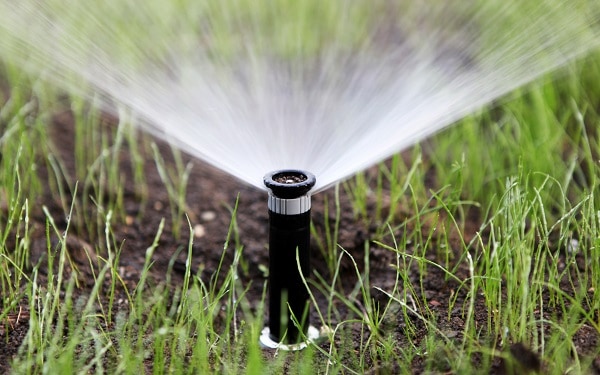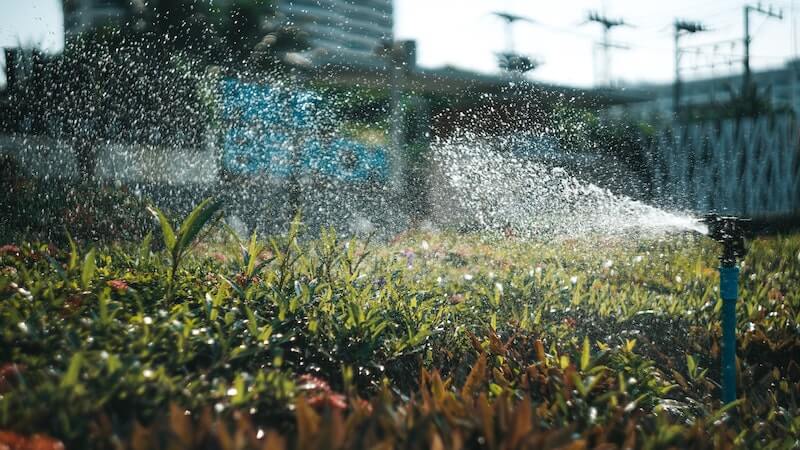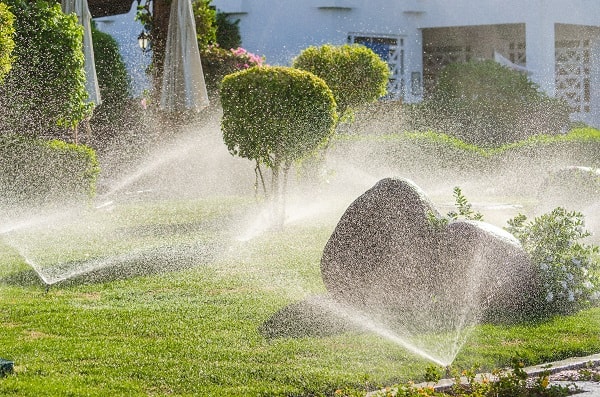
With spring comes the season for lawn and garden care. For many of us, this includes getting the sprinkler system back in proper working order after a long winter’s nap. In this article, we’ll outline ten steps to help you complete this important annual ritual. Please contact a sprinkler repair expert in your area if you notice any problems outside the scope of these tips.
1. Check the Last Frost Date for Your Area
The last thing you want is to fill your sprinkler system with water only for Old Man Winter to make a sudden comeback and turn it all into ice. So hold off on inspecting your sprinkler system until all danger of frost in your area has passed.
2. Give the System a Careful Visual Inspection
This means walking around your property and checking the sprinkler heads, valves, and visible pipes for any signs of damage, including:
- Bent or broken sprinkler heads.
- Cracked pipes or connectors.
- Grass, weeds, or debris around sprinkler system components.
You should also inspect the main valve, the drain valves, and the all-important backflow preventer.
In some areas, local laws may require a professional to inspect the backflow preventer, since it safeguards your home’s water supply from chemical contaminants. Check with your local city hall or building code enforcer for the regulations in your community.
3. Clean the Filters
Do this even if you cleaned them right before shutting the system off last year. Follow the manufacturer’s recommendations for cleaning these items. Replace any filters that have suffered damage or remain clogged.
4. Turn on the Main Valve SLOWLY

Even the most careful visual inspection can overlook damage that occurred to your sprinkler system during the winter. So use caution when turning on the water for the first time, keeping an eye out for leaks and other warning signs. Turn the valve off immediately and contact a sprinkler repair company if you notice any problems.
5. Activate the System Zone-by-Zone
Watch carefully as each zone comes to life. The sprinklers may sputter a little at first but should soon start to flow freely. If everything looks good, check the valves and water lines from the main intake onward. Make sure that all connectors are tight and no leaks are present.
6. Set the Automation Controls for the Upcoming Season
You may need to adjust last year’s settings if you’ve added or removed plants, shrubs, or trees. Check with a local gardener, sprinkler system technician, or landscape professional if you have any questions or concerns.
7. Activate the Entire System and Do a Walk-Through of the Property
You’ll want to do this on a nice, warm day since you’ll almost certainly get wet! Make sure that the sprinkler heads are functioning correctly and that water is flowing in a nice, even pattern.
Also, make sure that any flowerbeds or other landscaping features receive the moisture they need. You may need to adjust the system’s settings if you notice any problems.
If any sprinkler heads sputter or have other problems, you will need to disassemble it and check for dirt or grime in the system. You can usually remove these blockages by simply spraying out the affected part with a garden hose.
8. Check the Leak Indicator on Your Water Meter
Nothing will drive your monthly water bill through the roof faster than a leaking sprinkler system. Many water meters have a built-in leak detector that will warn you of any problems with the system. Turn off the system and get in touch with a professional right away if you see any evidence of leakage.
9. Review the Information in the Owner’s Manual or the Manufacturer’s Website

It’s a good idea to review your sprinkler system’s official instructions and precautions while you’re activating it for the first time this year. You may have forgotten important details that will help you to enjoy a healthier lawn and landscape.
Also, the company may have updated their information over the winter. Staying up-to-date on how your system works will help you to enjoy maximum return on investment.
10. Keep an Eye on Things as the Season Progresses
Once a week or so, you should walk around your property while the sprinklers run to ensure that nothing is amiss. Keep a sharp eye out for puddles of mud or water, as these can indicate the presence of leaks or other problems. Keep any grass or other plants around the sprinklers neatly trimmed so as not to impede water flow.
11. Don’t Forget to Invest in Annual Sprinkler Maintenance
Your sprinkler system works hard throughout spring and summer to give you a healthy, beautiful lawn. You can return the favor by keeping it in good shape. The best way to do this is to invest in annual sprinkler maintenance from your trusted team at HEB Plumbing & Sprinkler! Contact our team today for more information about our services or to schedule an appointment.
